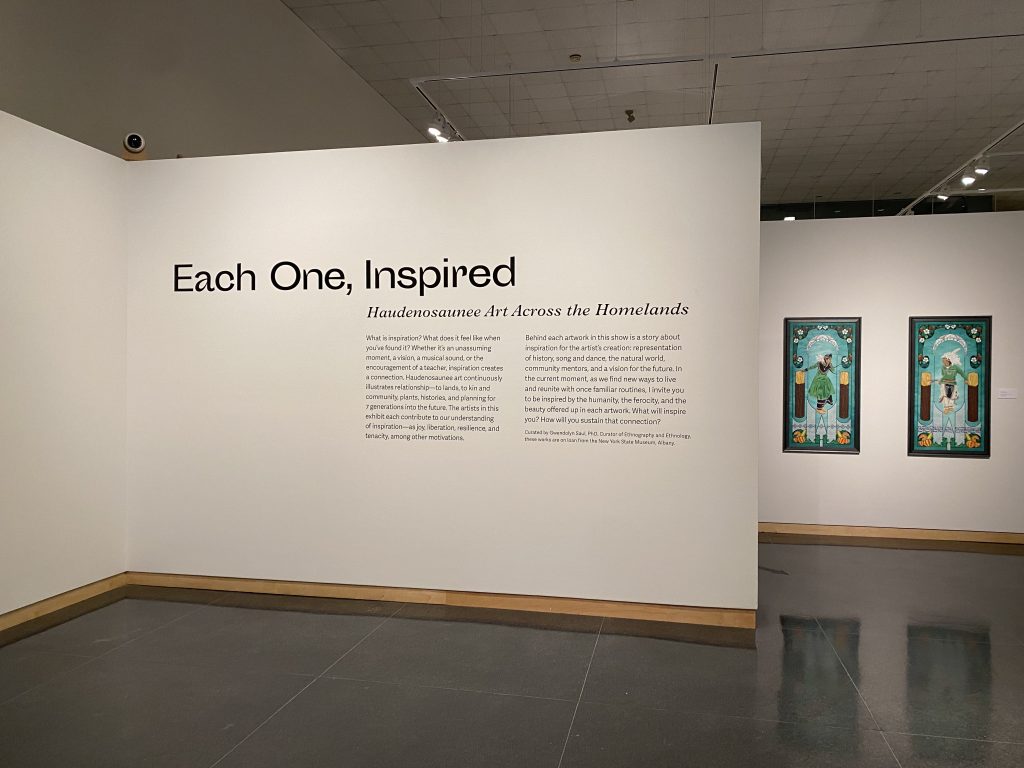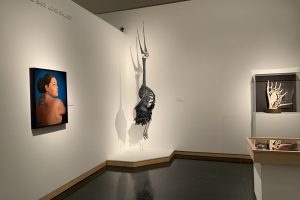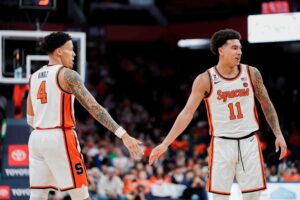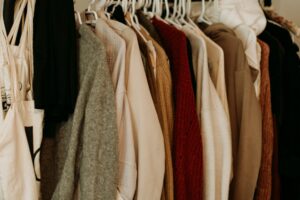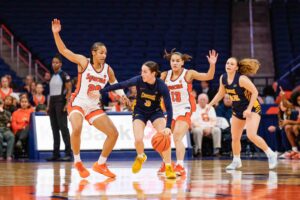SU Art showcases Haudenosaunee culture and basketry
How traditional basketry work is bringing Haudenosaunee culture to SU
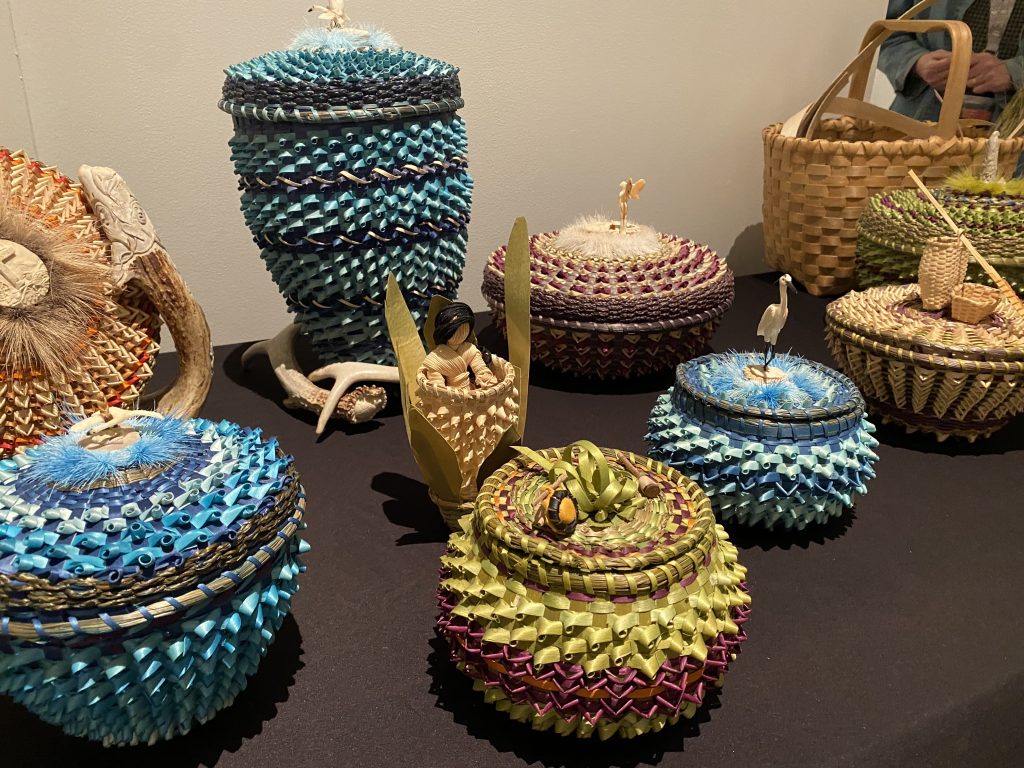
On Nov. 3, the Syracuse University Art Museum hosted a lunchtime lecture with Haudenosaunee artist Ronni-Leigh Goeman. Over 20 members of the Syracuse community gathered in the “Each One, Inspired” exhibit as Goeman showcased her traditional basketry work.
The artist was accompanied by both her daughter and father who helped to explain the meanings and significance of Goeman’s elaborately woven baskets. Goeman, who has been weaving for over 25 years, shared that her basket style developed from the notion that if her resources are taking a tree’s life, her baskets must be as beautiful as possible. Her art also serves to represent the pain and strength of the Haudenosaunee people. She uses her voice and work to heal and be strong again, Goeman said.
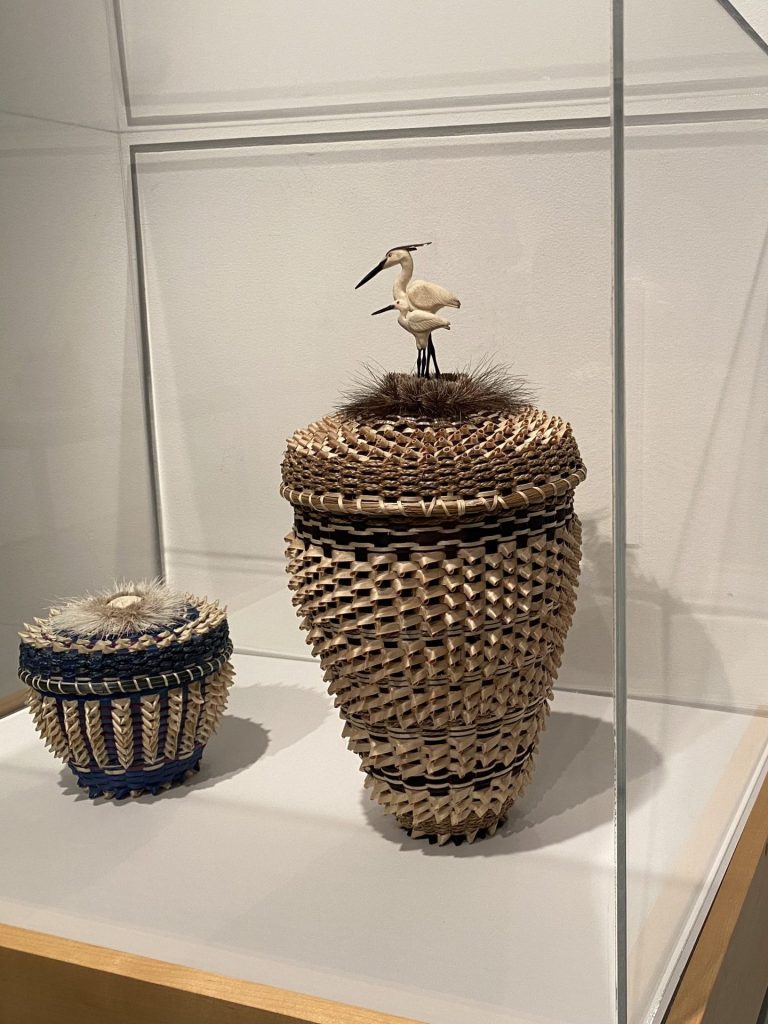
Each basket has a deeper meaning based in Haudenosaunee culture and tradition. Her piece, “Words That Come Before All Else” symbolizes a sense of gratitude, another represents medicine and the acknowledgement of where it came from. A bright red basket resembling a strawberry represents the Haudenosaunee origin story of spring and the notion of breaking the power of winter. A bright blue piece symbolizes the creation story of earth from the “sky world.” Goeman expressed that she loves creating art that represents her culture’s valued relationship with the natural world.
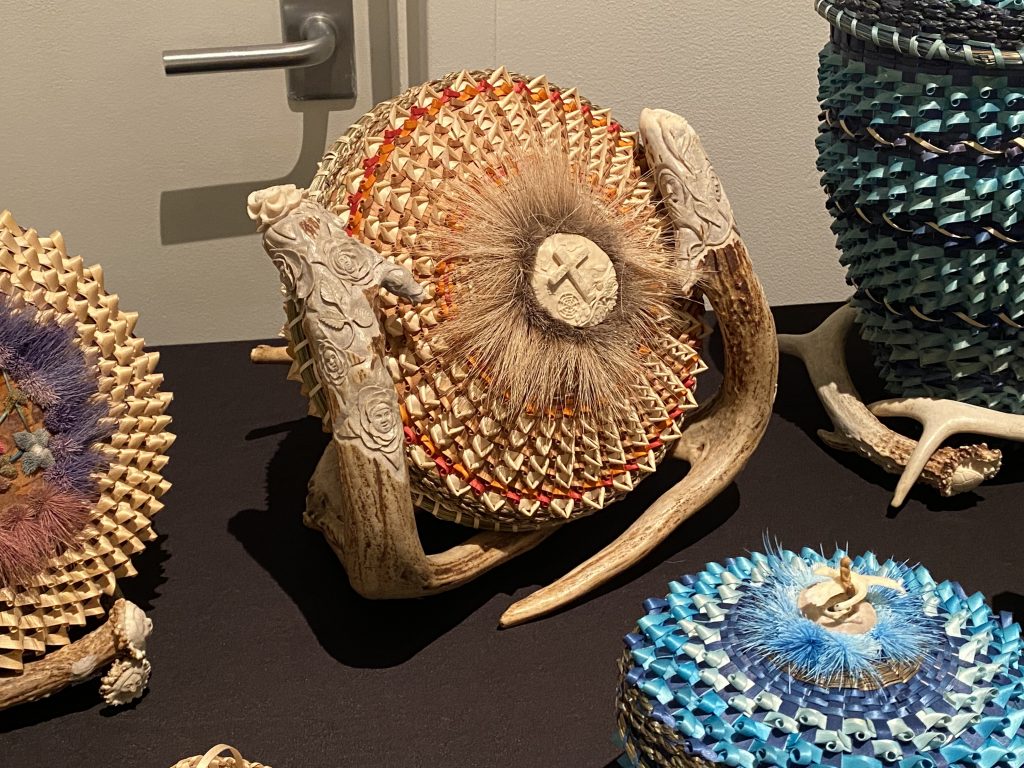
Goeman and her father emotionally explained the meaning behind her basket titled, “Stolen Dreams,” which represents the trauma and anguish faced by Haudenosaunee individuals sent to residential schools. The piece incorporates a fossilized ivory component carved by Goeman’s husband, Stonehorse Goeman, in addition to woven basketry elements by Goeman. The distinct colors of the basket each have different meanings. Red symbolizes the missing women of the Haudenosaunee nation, orange for the thousands of children found in unmarked graves, tan for the Haudenosaunee people, and white for a foreign entity. The intricate carvings each represent the pain of the nation’s individuals and families. “Baskets are beautiful, but I also want to tell a story,” Goeman said.
Each one of Goeman’s baskets incorporate ashwood, sweet grass, ivory, and moose hair. In using moose hair in her work, Goeman is reclaiming traditional art forms, she said. Attendees of the lecture had the opportunity to hold the pounded annual rings of the ash trees and the sweet grass.
Goeman explained that basketry is dwindling as an art form due to the limited resources available. She described the emerald ash borer insect species, which is rapidly putting ashwood at risk. Goeman shared that the lack of materials sometimes makes her feel like giving up, but she will continue to make baskets until she can’t any longer. While supplies are hard to come by, the Haudenosaunee people are adaptive and resilient, Goeman said. “If we want to continue, we’ll find a way to continue,” she explained.
Ronni-Leigh Goeman’s basket, “Blue Heron with Baby” is available for viewing among work by other Haudenosaunee artists in the Syracuse University Art Museum until Nov. 19.
